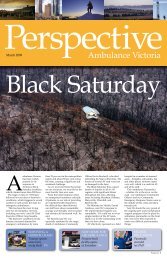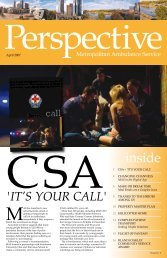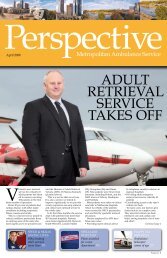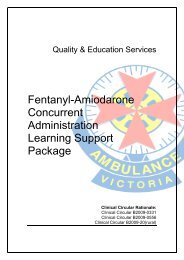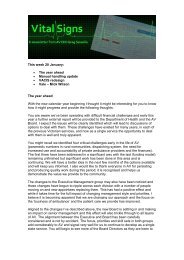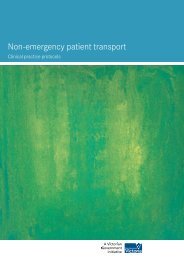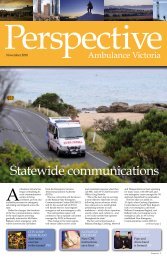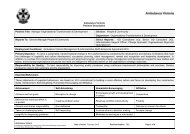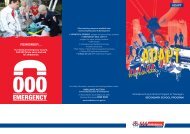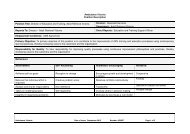VACAR Annual Report 2011/12 - Ambulance Victoria
VACAR Annual Report 2011/12 - Ambulance Victoria
VACAR Annual Report 2011/12 - Ambulance Victoria
You also want an ePaper? Increase the reach of your titles
YUMPU automatically turns print PDFs into web optimized ePapers that Google loves.
<strong>Ambulance</strong> <strong>Victoria</strong>,<br />
Emergency Medical Service<br />
The state of <strong>Victoria</strong>, Australia has a population of 5.6 million with approximately 4 million<br />
residing in metropolitan Melbourne. The emergency medical service (EMS) comprises<br />
ambulance paramedics who have some advanced life support skills (laryngeal mask airway,<br />
intravenous epinephrine) and MICA paramedics who are authorised to perform endotracheal<br />
intubation, rapid sequence induction, Pneumocath® insertion and administer a wider range of<br />
drugs. Paramedics in <strong>Victoria</strong> have a base qualification of a three year bachelor degree in<br />
emergency health sciences or Paramedicine. MICA paramedics are experienced paramedics<br />
who undergo a university-level post graduate diploma in Intensive Care Paramedic Practice.<br />
The Medical Priority Dispatch System (MPDS) is operational in <strong>Victoria</strong>. MICA paramedics<br />
are dispatched to patients with critical illness, including patients with cardiac arrest. A first<br />
responder program for early defibrillation by fire-fighters operates for suspected cardiac arrest<br />
patients in the inner and some peripheral areas of Melbourne. In addition, AV co-responds<br />
with 29 volunteer community teams in smaller, predominately rural communities across the<br />
state.<br />
The cardiac arrest protocols follow the recommendations of the Australian Resuscitation<br />
Council. <strong>Ambulance</strong> <strong>Victoria</strong> paramedics are not obliged to commence resuscitation when the<br />
clinical presentation is inconsistent with life. This includes decapitation, presence of rigor<br />
mortis, decomposition or post mortem lividity, where death has been declared by a Medical<br />
Officer who is or has been at the scene and where the presenting rhythm was monitored as<br />
asystole for greater than 30 seconds, and there has been more than 10 minutes downtime with<br />
no evidence of hypothermia, drug overdose or family/bystander objections. Paramedics may<br />
discontinue resuscitation if advanced life support has been performed for 30 minutes without<br />
return of spontaneous circulation (ROSC), the rhythm is not Ventricular Fibrillation (VF) or<br />
Ventricular Tachycardia (VT), and there are no signs of life, no gasps or evidence of pupillary<br />
reaction and no evidence of hypothermia or drug overdose.<br />
<strong>VACAR</strong> <strong>Annual</strong> <strong>Report</strong> <strong>2011</strong>/<strong>12</strong> Page 14





